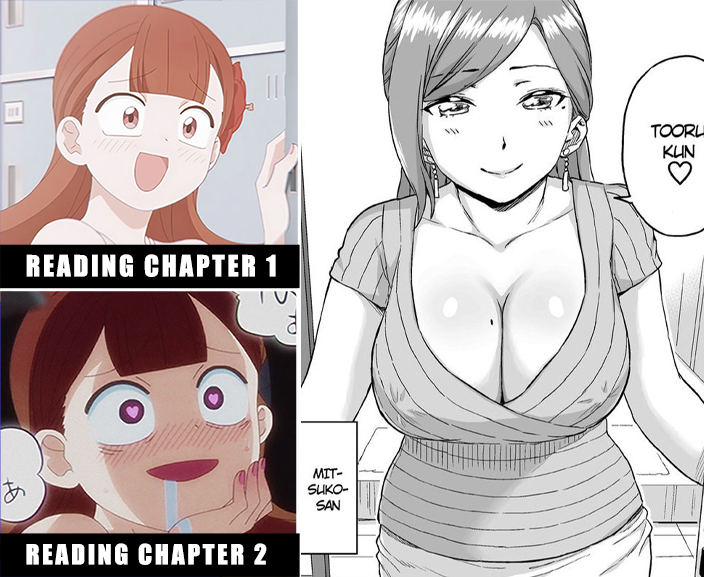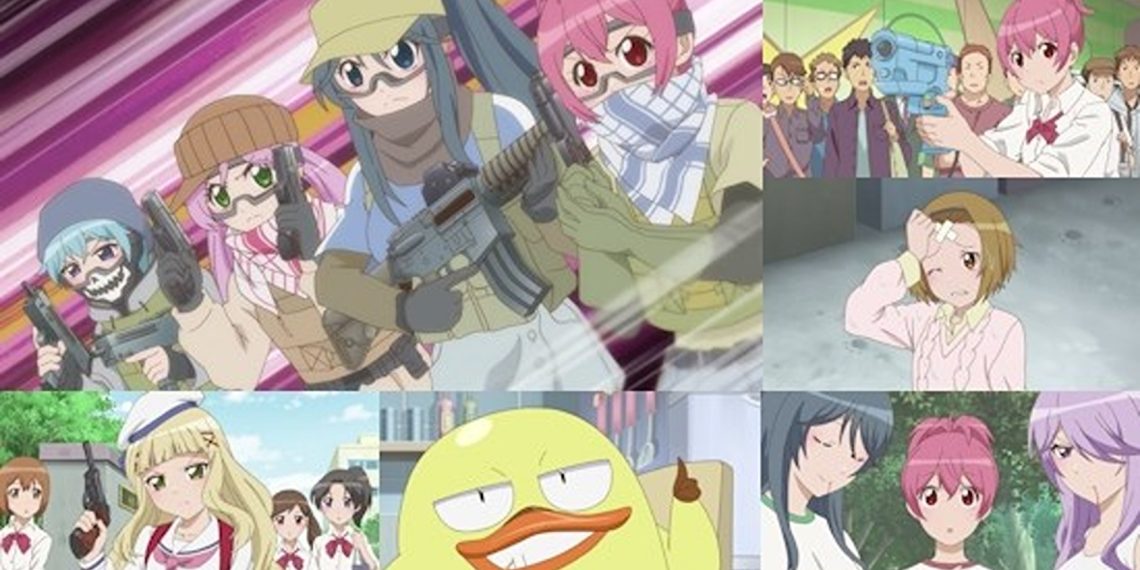Shojo anime is often associated with its romantic themes, setting it apart from the action-packed narratives of Shonen. However, it might surprise some to learn that not all shojo series revolve around romance.
In fact, there are quite a few that either minimize romance or don’t feature it at all. The defining characteristic of shojo anime is its target audience – young females – rather than a requirement for romantic plots.
In essence, non-romantic shojo anime offers a diverse range of narratives that cater to the interests and preferences of young female audiences.
Whether it’s the thrill of sword fights, the enchantment of magical adventures, or the comfort of everyday life, these series celebrate the multifaceted nature of storytelling within the shojo genre.
6. Sabagebu!
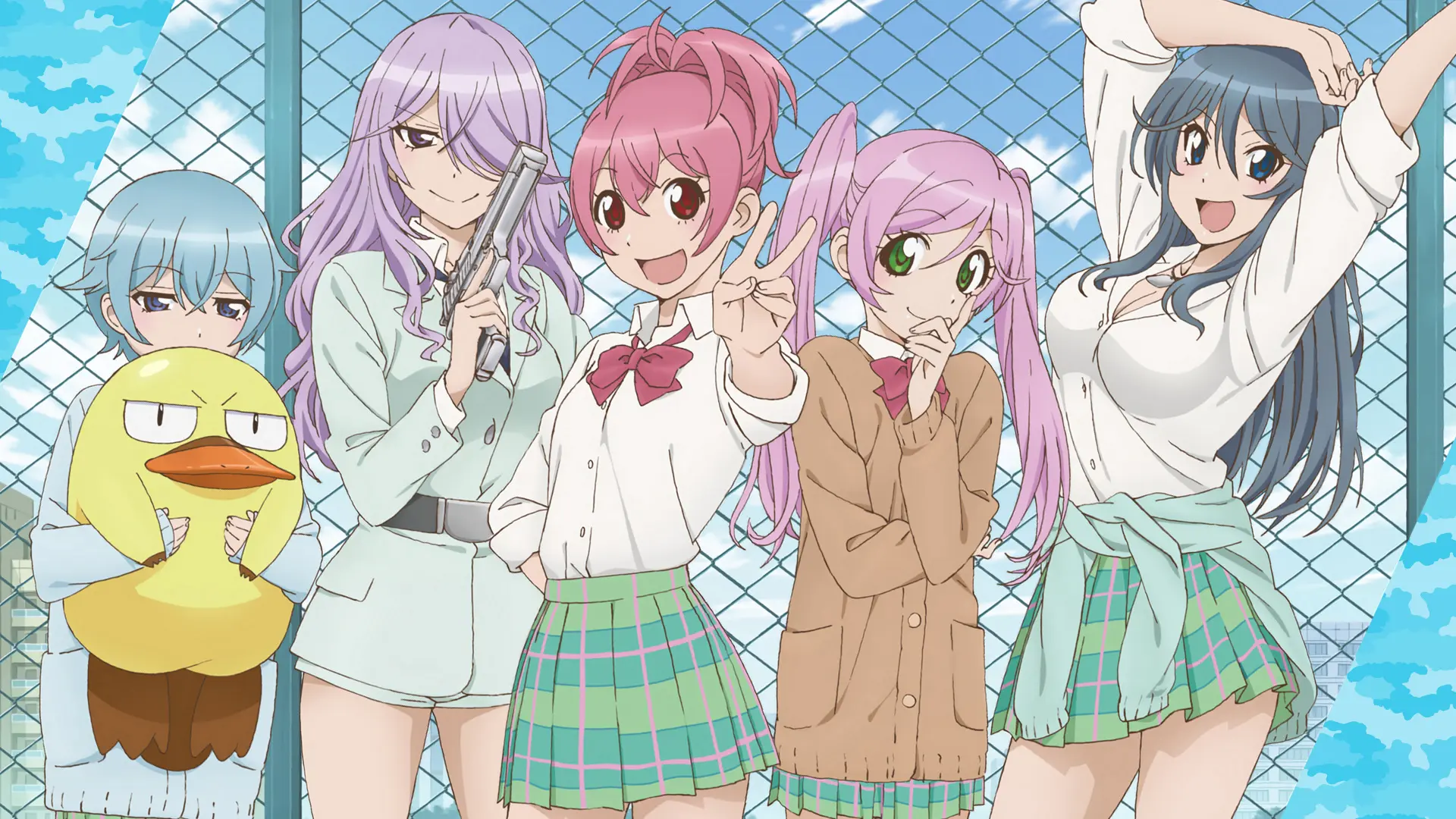
The ‘Cute Girls Doing Cute Things’ genre is typically associated with the seinen demographic, but Sabagebu! – Survival Game Club! stands out as a unique entry that ran in a shojo magazine. The series follows Momoka, a girl unwittingly roped into her school’s Survival Game Club, where mock battles with airsoft guns take center stage.
In the tradition of CGDCT anime, the majority of the cast is female, and romance takes a back seat. Instead, the series focuses on the uproarious antics of the Survival Game Club and their exaggerated airsoft battles, transforming it into more of an action comedy than a traditional shojo narrative.
“Sabagebu! – Survival Game Club!” is a Japanese manga series created by Hidekichi Matsumoto. The manga was serialized in Kodansha’s “Nakayoshi” magazine from December 2010 to December 2016, and it was collected into 13 tankobon volumes. The series received an anime adaptation by Pierrot Plus, which aired from July to September 2014, running for 12 episodes and an OVA.
“Sabagebu!” revolves around Momoka Sonokawa, a high school student who unexpectedly becomes involved in her school’s Survival Game Club, led by the eccentric and wealthy Miou Ootori.
The club members engage in various survival games using airsoft guns, leading to numerous comedic and action-packed scenarios. The anime’s story is episodic, focusing on the day-to-day misadventures of the club members, often filled with exaggerated, over-the-top humor and parodic elements.
Momoka’s journey begins when she transfers to Aogiri High School and has an unfortunate encounter with a pervert on the train, only to be saved by Miou. Grateful but bewildered, Momoka finds herself forcibly recruited into the Survival Game Club. Initially resistant, she quickly adapts to the club’s unique dynamics and discovers a darker, more ruthless side of herself.

Characters:
- Momoka Sonokawa: The protagonist of the series, Momoka starts as a seemingly ordinary high school girl but soon reveals her true colors as a pragmatic, ruthless, and sometimes downright cruel individual. Her character is the source of much of the series’ dark humor, as she often engages in underhanded tactics to win survival games.
- Miou Ootori: The club president, Miou is a charismatic, wealthy, and slightly sadistic leader who loves survival games. She recruits members with her charm and occasionally manipulative tactics. Despite her eccentricities, she genuinely cares for her club members.
- Maya Kyoudou: A kind-hearted and gentle girl who works as a model and idol. Despite her demure appearance, she is a capable and enthusiastic member of the club. Maya’s dual life as an idol adds an interesting layer to her character.
- Urara Kasugano: A small but fierce girl with a massive crush on Miou. She is intensely jealous of anyone who gets close to Miou and has a yandere-like personality, providing a lot of comedic moments.
- Kayo Goutokuji: A stoic, calm, and intelligent girl with a passion for cosplay. She often dresses in elaborate costumes during survival games, adding a humorous twist to the scenarios. Kayo’s interest in cosplay brings a unique flair to her character.
Themes:
While “Sabagebu!” is primarily a comedy series, it touches on several themes:
- Friendship and Team Dynamics: Despite their differences and frequent squabbles, the members of the Survival Game Club share a bond of friendship and camaraderie. Their interactions highlight the importance of teamwork and support.
- Self-Discovery and Empowerment: The characters, especially Momoka, undergo personal growth and self-discovery through their participation in the club’s activities. Momoka’s journey from a passive to an assertive individual is central to the series.
- Satire and Parody: The series frequently parodies various tropes from action, military, and other anime genres. This self-aware humor is a hallmark of “Sabagebu!” and adds an additional layer of entertainment for genre-savvy viewers.
The animation style of “Sabagebu!” is vibrant and energetic, perfectly complementing the series’ comedic and action-packed tone. Pierrot Plus did an excellent job of bringing the characters to life through expressive animation and dynamic action sequences, particularly during the survival games. The character designs are distinctive and visually appealing, capturing each character’s unique personality.
The soundtrack complements the series’ lively atmosphere. The opening theme, “YES!!,” performed by Ayaka Ohashi, is upbeat and catchy, setting the tone for the episodes. The ending theme, “Piti Pati SurviBird” by Gesukawa Girls, maintains the playful and whimsical atmosphere of the series.
“Sabagebu!” has been praised for its humor, unique premise, and engaging characters. The series’ ability to balance slapstick comedy with character development and parody has made it a standout among comedy anime. Its self-aware and irreverent approach to storytelling resonates with fans who appreciate both action and humor.
The anime adaptation received positive reviews for its faithful representation of the manga’s humor and characters. Fans of the manga enjoyed seeing the lively animation and voice acting, which added depth to the characters and brought the comedic scenarios to life.
Sabagebu! – Survival Game Club! is a delightful and entertaining series that offers a fresh take on the high school club genre.
With its eccentric characters, hilarious scenarios, and underlying themes of friendship and empowerment, it provides a fun and engaging viewing experience for fans of comedy and action alike. Whether you’re looking for laughs, action, or a unique blend of both, “Sabagebu!” delivers with its distinctive style and charm.
5. School Babysitters
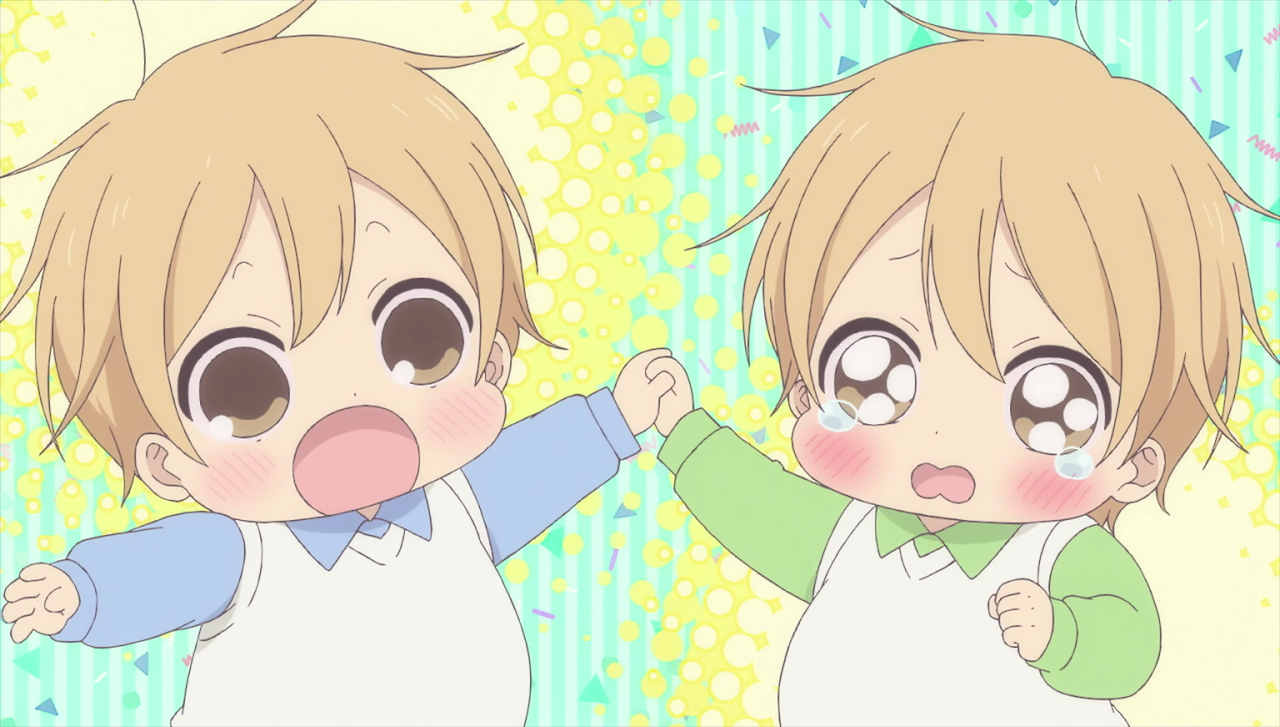
In School Babysitters, we follow the journey of Ryuuichi Kashima, a teenager who tragically loses both his parents in a plane crash. Left to care for his younger brother alone, Ryuuichi finds unexpected help when the stern chairwoman of an elite academy offers them a home under one condition: Ryuuichi must lend a hand at the school’s daycare center.
While this slice-of-life series isn’t entirely devoid of romance, it primarily centers on Ryuuichi’s responsibilities and the bonds he forms with the toddlers he cares for. Despite the occasional crushes that some female students develop on Ryuuichi, including finding themselves in a love triangle, his focus remains on his brother and the children he looks after.
“School Babysitters” (学園ベビーシッターズ, Gakuen Babysitters) is a heartwarming anime and manga series that intricately explores themes of family, loss, and the power of community through the lens of child caregiving. Created by Hari Tokeino, the manga began serialization in 2009 and was later adapted into a 12-episode anime series by Brain’s Base in 2018.
The story follows Ryuuichi Kashima, a high school student who, along with his toddler brother Kotarou, loses their parents in a tragic plane crash.
As orphans, they are taken in by Yoko Morinomiya, the stern chairwoman of Morinomiya Academy, who offers them a place to stay on the condition that Ryuuichi works at the school’s daycare center. This daycare, primarily for the children of the academy’s staff, becomes the central setting for the series, providing both comedic and heartfelt moments as Ryuuichi navigates his new responsibilities.
Ryuuichi Kashima, the protagonist, embodies resilience and compassion. Despite his own grief, he takes on the role of caregiver to his younger brother and the other children at the daycare.
His character development is a core focus, as he learns to balance his school life, personal sorrow, and the demanding yet rewarding job of looking after children. Kotarou, Ryuuichi’s younger brother, is a quiet and endearing child who often acts as an emotional anchor for Ryuuichi, highlighting the strong bond between the siblings.

The daycare center itself is populated with a diverse group of children and caretakers, each contributing to the series’ charm. From the mischievous Taka to the shy Kirin, the children’s distinct personalities create a dynamic environment that Ryuuichi must adapt to.
The staff members, including the motherly Maria Inomata and the quirky Tomoya Yagi, provide additional layers of support and humor, making the daycare a microcosm of community and family.
One of the standout aspects of “School Babysitters” is its ability to blend humor with poignant storytelling. The comedic elements often arise from the children’s antics and the caretakers’ reactions, providing lighthearted relief.
However, the series does not shy away from deeper emotional themes. The depiction of grief, especially through Ryuuichi’s journey, is handled with sensitivity, showing how the characters cope with loss and find solace in their new family structure.
The animation by Brain’s Base is notable for its warm and inviting art style, which complements the series’ tone. The character designs are expressive, especially in capturing the innocence and playfulness of the children.
The color palette and settings are equally inviting, creating a visually pleasing experience that enhances the narrative’s emotional impact.
Musically, “School Babysitters” features a soundtrack that underscores the series’ moods effectively. The opening theme, “Endless Happy World” by Daisuke, is upbeat and captures the optimistic spirit of the series, while the ending theme, “Oshiete yo” by Hyorotto Danshi, has a more soothing and reflective tone, encapsulating the show’s blend of joy and contemplation.
In terms of reception, “School Babysitters” has been praised for its heartfelt storytelling and well-developed characters. Viewers appreciate the series for its portrayal of everyday life and the genuine connections formed between characters. It has been noted for its ability to address serious topics without becoming overly dramatic, maintaining a balance that makes it accessible to a broad audience.
School Babysitters is a touching and engaging series that offers a unique look at caregiving and community through the eyes of a young caregiver. Its blend of humor, heart, and thoughtful character development makes it a memorable addition to the slice-of-life genre.
Whether through the manga or the anime adaptation, the series delivers a meaningful message about the importance of family, support, and finding strength in unexpected places.
4. Natsume’s Book of Friends
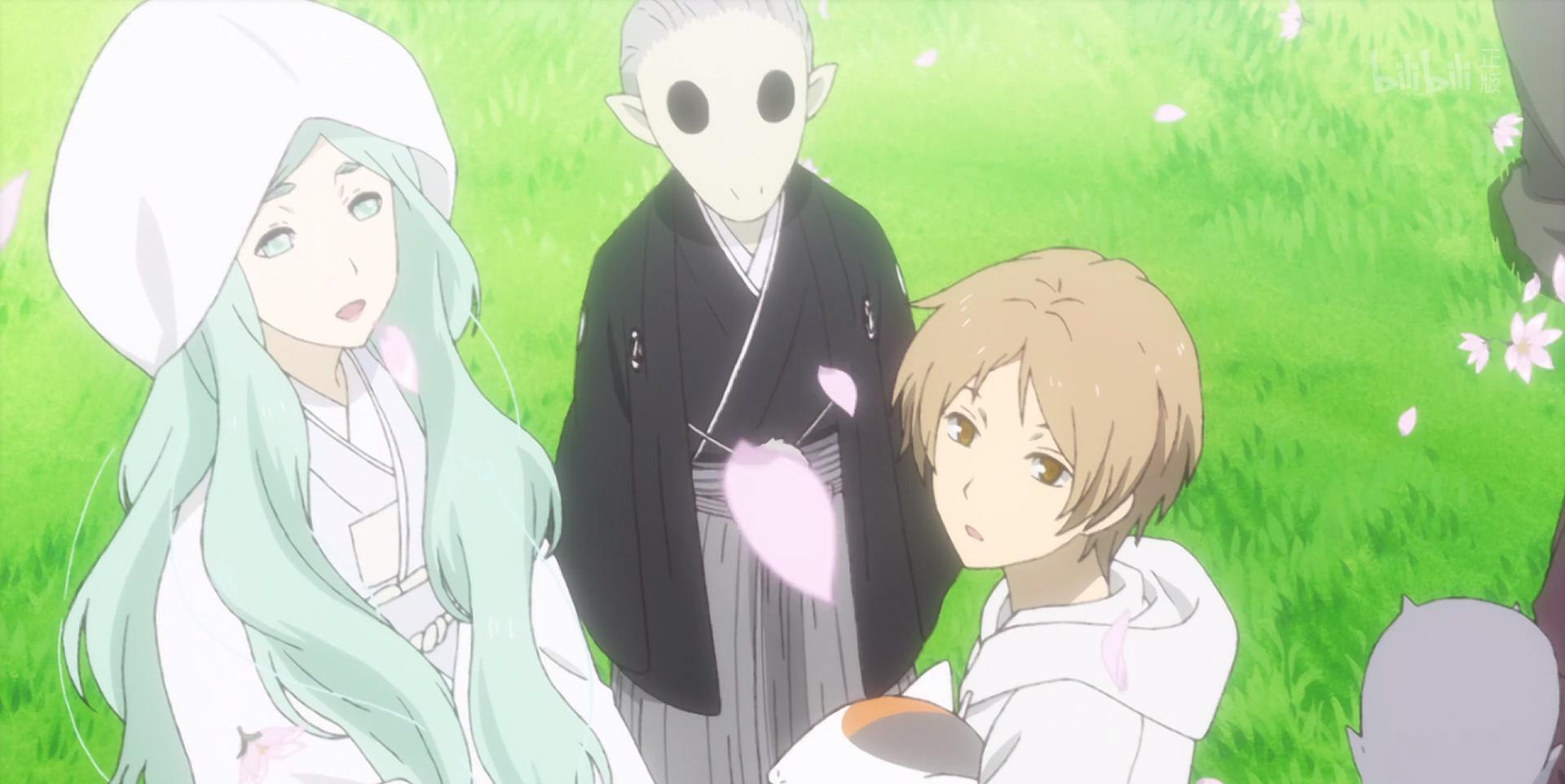
Natsume’s Book of Friends follows the journey of Takashi Natsume, a boy blessed with the ability to see youkai, inherited from his grandmother, Reiko. Upon stumbling upon Reiko’s Book of Friends, containing the names of youkai bound to her, Natsume resolves to free them from their contracts.
Creator Yuki Midorikawa envisioned the series as a supernatural narrative devoid of romance. While there are subtle romantic undertones between minor characters, romance isn’t the focal point. Instead, the anime looks into themes of self-acceptance and the intricate relationships between humans and youkai.
“Natsume’s Book of Friends” (夏目友人帳, Natsume Yūjin-chō) is a nice Japanese manga series written and illustrated by Yuki Midorikawa. The series began serialization in 2005 in LaLa DX, later moving to LaLa, and has been adapted into an anime series produced by Brain’s Base and later by Shuka.
The anime, which debuted in 2008, has multiple seasons, each consisting of 11 to 13 episodes, along with several OVAs and a feature film. The story is a beautiful blend of the supernatural and slice-of-life genres, focusing on themes of empathy, connection, and the understanding of others.
The narrative centers around Takashi Natsume, a high school student who has the ability to see spirits, or “youkai.” This ability has caused him to be ostracized and passed from one relative to another throughout his childhood, leaving him feeling isolated and misunderstood.
When he inherits a mysterious book from his late grandmother, Reiko Natsume, his life takes a profound turn. The book, known as the “Book of Friends,” contains the names of spirits that Reiko had bound to her service, compelling them to obey her commands.
Takashi decides to dedicate himself to the task of returning these names to their respective spirits, freeing them from their binding. This decision sets the stage for the series, as each episode often revolves around a different spirit and its unique backstory. Through these encounters, Takashi learns more about the youkai world and about his grandmother, while also growing as a person.
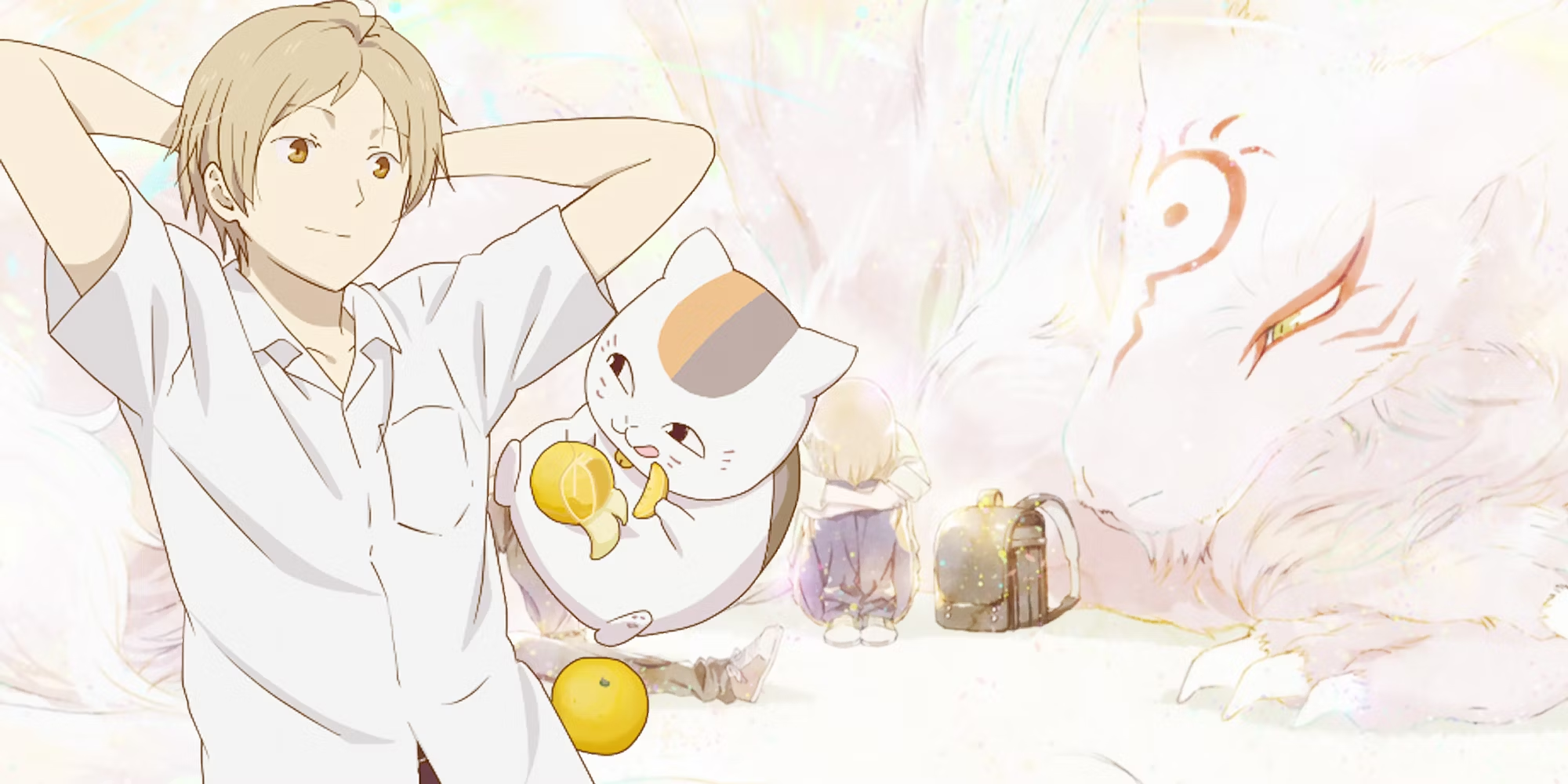
One of the central figures in the series is Madara, a powerful spirit who takes on the form of a lucky cat statue and is affectionately called “Nyanko-sensei” by Takashi. Madara becomes Takashi’s bodyguard and guide, though he has his own motives for staying close to the Book of Friends. The dynamic between Takashi and Nyanko-sensei is one of the highlights of the series, providing both comic relief and moments of profound connection.
The supporting characters in “Natsume’s Book of Friends” add depth and richness to the story. Takashi’s friends and guardians, such as the kind-hearted couple Shigeru and Touko Fujiwara, who take him in and offer him a stable home, provide a sense of normalcy and warmth in his turbulent life.
Additionally, other recurring characters, like the exorcist Natori and his youkai companion Hiiragi, introduce different perspectives on the interaction between humans and spirits.
The series excels in its portrayal of youkai, presenting them as complex beings with their own emotions, desires, and histories. This nuanced depiction challenges the often simplistic view of spirits in folklore, highlighting themes of empathy and understanding.
The interactions between Takashi and the youkai are often poignant, revealing the shared struggles and yearnings of both humans and spirits.
Visually, “Natsume’s Book of Friends” is distinguished by its delicate and evocative art style. The animation captures the ethereal beauty of the spirit world and the serene surfaces of the Japanese countryside.
The character designs are expressive, effectively conveying the emotions and personalities of both human and youkai characters. The soft color palette and gentle animation style contribute to the series’ tranquil and contemplative atmosphere.
The soundtrack, composed by Makoto Yoshimori, complements the series’ tone beautifully. The music is subtle and atmospheric, enhancing the emotional weight of each scene. The opening and ending themes, performed by various artists over the different seasons, often reflect the introspective and soothing nature of the series.
“Natsume’s Book of Friends” has been praised for its emotional depth and storytelling. Viewers and critics alike appreciate the series for its ability to weave together episodic narratives that build on the overarching themes of connection and empathy. The series’ slow-paced, reflective nature allows for a deep exploration of its characters and their relationships.
In terms of reception, “Natsume’s Book of Friends” has garnered a dedicated fanbase and critical acclaim for its unique approach to the supernatural genre. Its exploration of human and spirit relationships, combined with its heartfelt storytelling, makes it a standout series in both manga and anime.
Natsume’s Book of Friends is a touching and thought-provoking series that goes into the complexities of human and spirit interactions. Its blend of supernatural elements with everyday life, along with its emphasis on empathy and understanding, creates a narrative that resonates deeply with its audience.
Whether through the manga or anime adaptation, the series offers a profound and moving experience that lingers long after the final page or episode.
3. Little Witch Academia
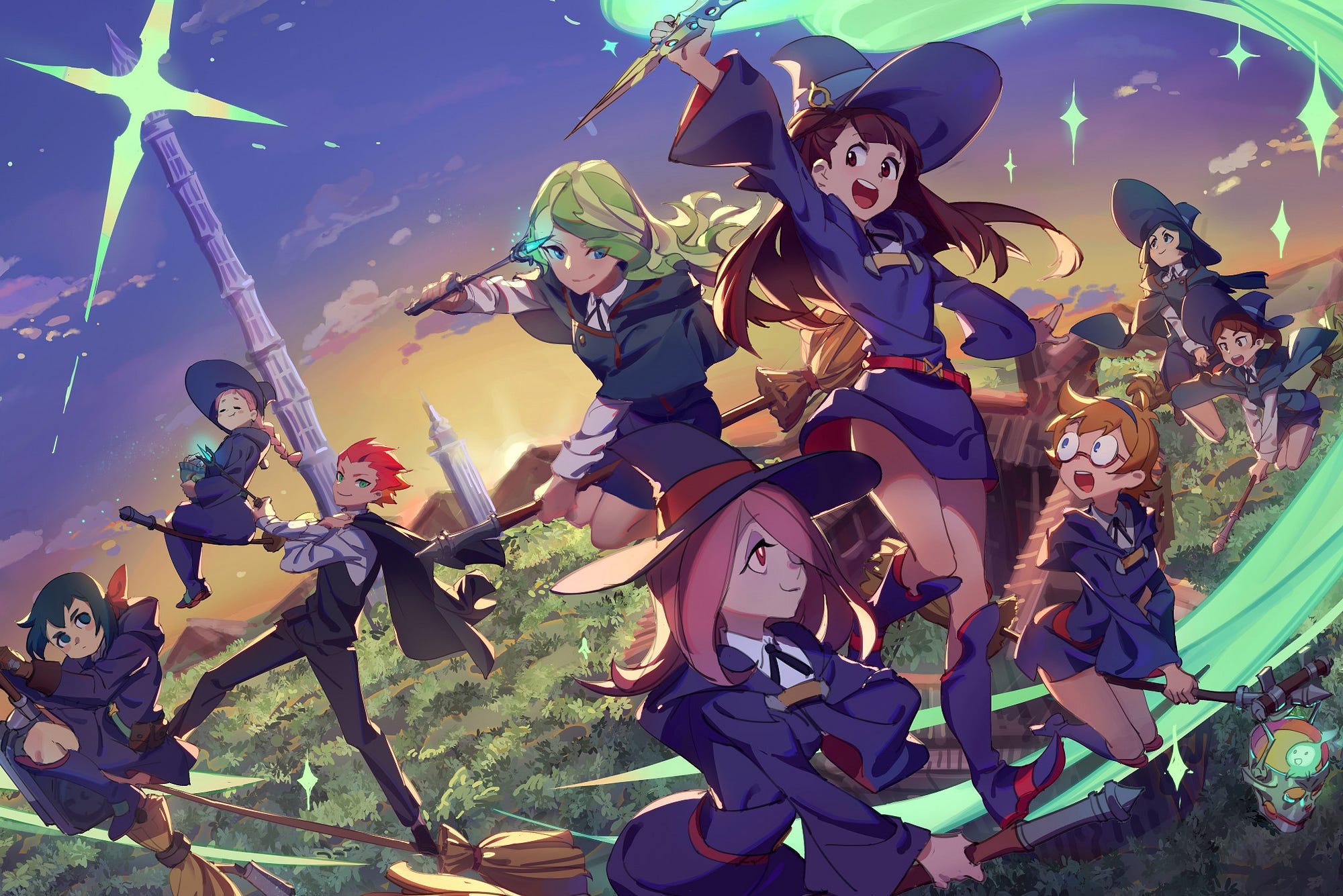
Despite the fervent popularity of fan shipping among Little Witch Academia viewers, the creators have made it clear that none of these pairings will be canon. Instead, they opt to emphasize themes such as friendship, personal growth, and the enchantment of magic. Even plans to develop a romantic relationship between Akko and Andrew were abandoned.
While romance isn’t the central focus of the show, there are playful subtexts between characters like Akko, Andrew, and Diana. However, these dynamics don’t evolve into full-fledged romantic subplots. The creators remain committed to their vision, prioritizing the exploration of friendship and the magical world they’ve created.
“Little Witch Academia” is a delightful anime series that has grabbed audiences with its enchanting blend of magic, friendship, and adventure. Originally created as a short film by Yoh Yoshinari as part of the “Anime Mirai” project in 2013, it gained widespread acclaim and later inspired a full-length anime series produced by Studio Trigger, which aired in 2017. The series consists of 25 episodes, along with several OVAs and a spin-off manga.
The story follows Atsuko “Akko” Kagari, an ordinary girl with an extraordinary dream of becoming a witch like her idol, Shiny Chariot. Despite lacking magical abilities herself, Akko enrolls at Luna Nova Magical Academy, a prestigious school for witches, determined to fulfill her dream through sheer determination and hard work.
Alongside her friends, the studious Lotte and the mischievous Sucy, Akko goes on a series of magical adventures that test her resolve and challenge her beliefs.
At the heart of “Little Witch Academia” is the theme of believing in oneself and pursuing one’s dreams against all odds. Akko’s journey is one of self-discovery and growth as she learns to harness her own unique strengths and overcome her shortcomings. Her unwavering optimism and determination inspire those around her, demonstrating the power of perseverance and friendship.
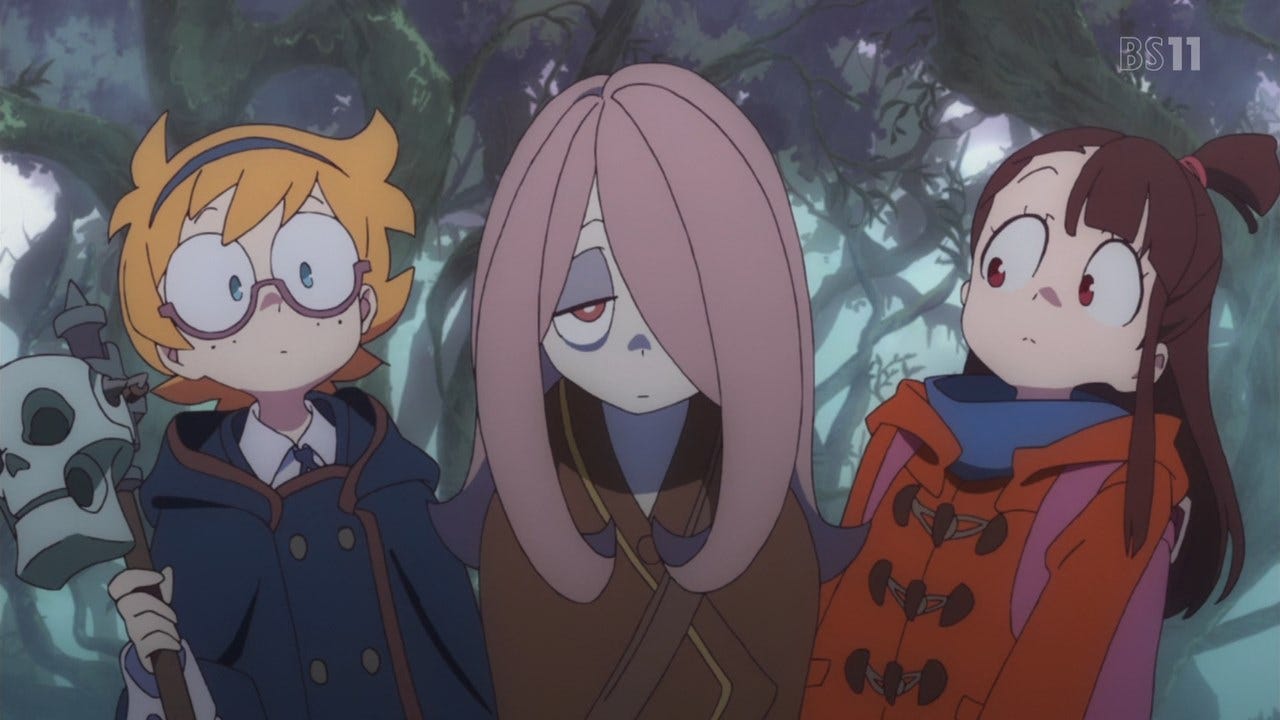
The dynamic between the main characters is a key strength of the series. Akko, Lotte, and Sucy each bring their own distinct personalities and talents to the table, creating a complementary trio that drives the narrative forward. Their interactions are filled with humor, warmth, and genuine camaraderie, forming the emotional core of the series.
In addition to the main trio, “Little Witch Academia” features a colorful cast of supporting characters, including the haughty Diana Cavendish, Akko’s rival-turned-friend, and the eccentric Professor Ursula Callistis, who plays a pivotal role in Akko’s journey. Each character contributes to the rich tapestry of the magical world, adding depth and dimension to the story.
Visually, “Little Witch Academia” is a feast for the eyes, with vibrant animation and charming character designs. Studio Trigger’s distinctive style shines through in the fluid motion and expressive character animations, bringing the magical world of Luna Nova to life in vivid detail. The spellcasting sequences are particularly impressive, showcasing the creativity and imagination of the animators.
The music, composed by Michiru Oshima, complements the whimsical tone of the series perfectly. The soundtrack features a mix of upbeat melodies and enchanting orchestral arrangements that enhance the mood of each scene. The opening and ending themes, performed by YURiKA and Yuiko Ohara respectively, capture the spirit of adventure and wonder that defines the series.
“Little Witch Academia” has been praised for its charming characters, imaginative world-building, and heartfelt storytelling.
Viewers of all ages have been drawn to its message of self-belief and the power of friendship, making it a beloved addition to the magical girl genre. The series has also been lauded for its positive representation of female characters and its celebration of diversity and inclusion.
Little Witch Academia is a delightful and enchanting anime series that casts a spell on its audience with its whimsical charm and heartfelt storytelling. Whether you’re a fan of magic and adventure or simply looking for a heartwarming tale of friendship and self-discovery, this series is sure to leave you spellbound from beginning to end.
2. Laughing Under the Clouds
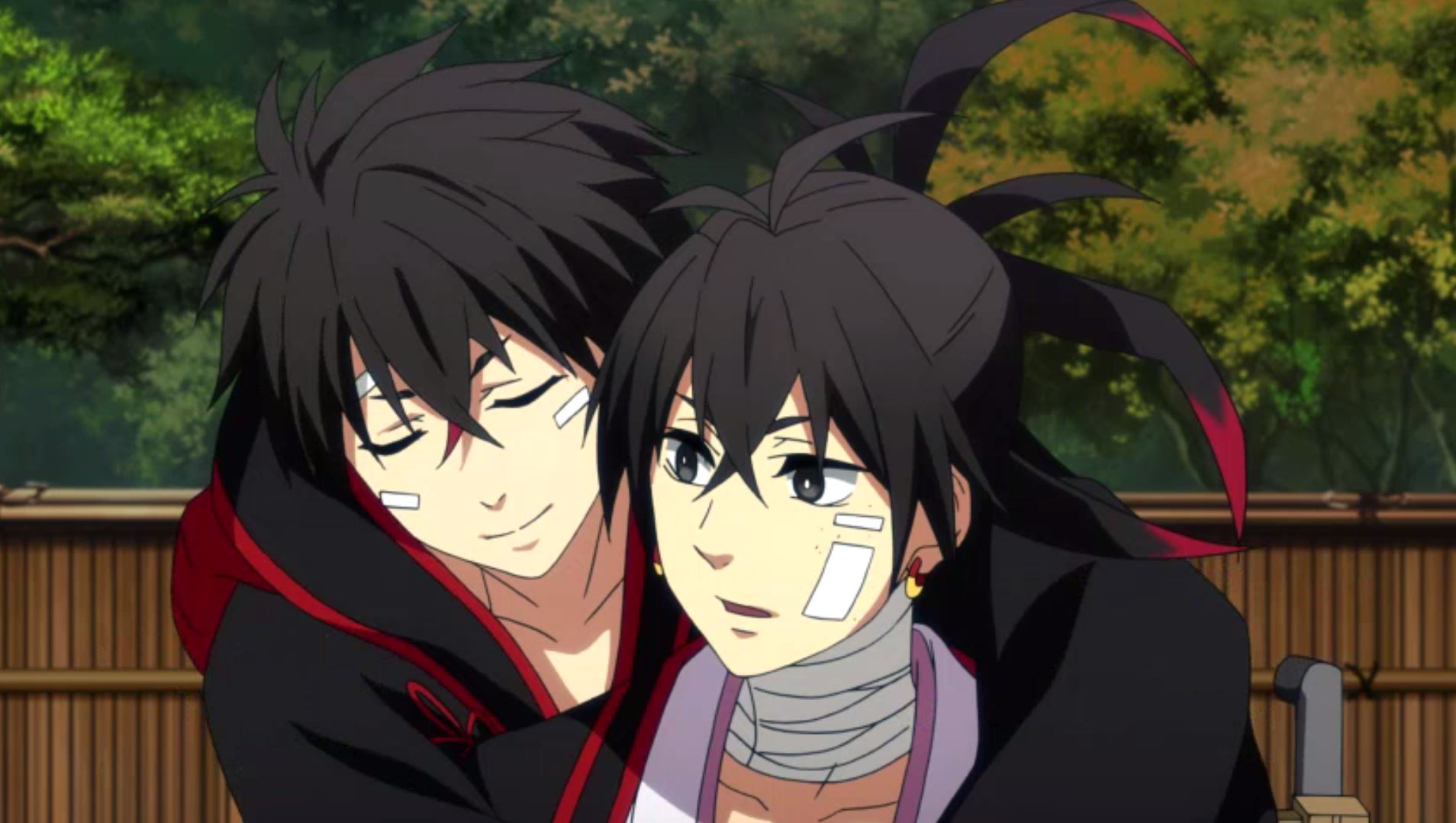
Laughing Under the Clouds centers around three samurai brothers – Tenka, Soramaru, and Chuutarou Kumou – entrusted with the task of transporting criminals to a secluded prison situated in the middle of a lake.
Set against the backdrop of the Meiji era, the series unfolds as the Kumou brothers confront a formidable adversary: Orochi, a demon snake that reincarnates every three centuries, leaving chaos and devastation in its wake. Throughout their journey, the narrative underscores the importance of family bonds and the weight of duty, as the brothers grapple with their shared heritage and the responsibilities placed upon them.
“Laughing Under the Clouds” (曇天に笑う, Donten ni Warau) is a anime and manga series that seamlessly blends historical drama, supernatural elements, and intricate character dynamics into a compelling narrative.
Created by Karakara Kemuri, the manga was serialized from 2011 to 2013 and was later adapted into an anime series by Studio Wit, airing in 2014. The story is set in the Meiji era of Japan, a time of social upheaval and transition, and follows the three Kumo brothers as they navigate the challenges of their duty as guardians of a remote prison island and the secrets of their own past.
The series begins with the Kumo brothers—Tenka, Soramaru, and Chutaro—tasked with the responsibility of overseeing the incarceration of dangerous criminals on a secluded island in Lake Biwa. However, their tranquil existence is disrupted when a mysterious prisoner with supernatural abilities, Botan, is brought to the island.
As the brothers grapple with Botan’s presence and the growing unrest among the prisoners, they uncover dark secrets about their family’s past and the true nature of their duty.
At its core, “Laughing Under the Clouds” explores themes of loyalty, redemption, and the complexities of family bonds. The Kumo brothers, each with their own distinct personalities and motivations, must confront their past traumas and reconcile their conflicting desires in order to protect those they care about.
Tenka, the eldest brother, is depicted as a charismatic and compassionate leader who prioritizes the well-being of his siblings above all else. Soramaru, the middle brother, struggles with feelings of inadequacy and resentment towards his older brother, while Chutaro, the youngest brother, grapples with the burden of his family’s legacy and the expectations placed upon him.
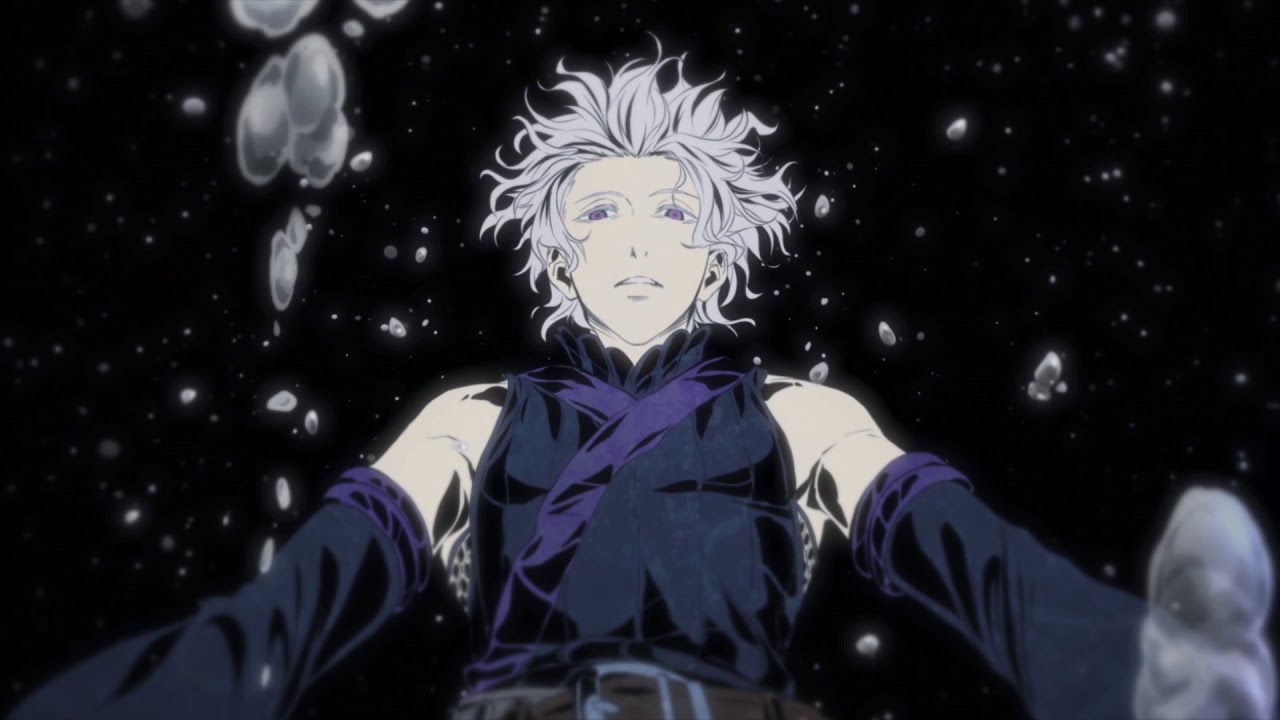
The series’ supporting cast adds depth and dimension to the story, with characters like Botan, the enigmatic prisoner whose true motives remain shrouded in mystery, and Hirari Abeno, a young girl with a tragic connection to the Kumo brothers, playing significant roles in the unfolding narrative.
The interactions between the characters are nuanced and emotionally resonant, as they confront their past traumas and forge new alliances in the face of adversity.
Visually, “Laughing Under the Clouds” is stunning, with lush backgrounds and detailed character designs that evoke the atmosphere of Japan’s Meiji era. Studio Wit’s animation brings the world of the series to life with fluid action sequences and dynamic camera work that heighten the tension and drama of key moments.
The use of color and lighting further enhances the mood of the series, creating a sense of foreboding and mystery that permeates throughout.
The soundtrack, composed by Shuji Katayama, complements the series’ tone perfectly, with haunting melodies and stirring orchestral arrangements that underscore the emotional weight of the story. The opening and ending themes, performed by various artists, capture the essence of the series with their evocative lyrics and melodies.
“Laughing Under the Clouds” has been praised for its gripping storyline, complex characters, and evocative art direction. Viewers have been drawn to the series’ rich historical setting and its exploration of themes that resonate across time and culture. The anime adaptation, in particular, has received acclaim for its faithful adaptation of the source material and its stellar production values.
Laughing Under the Clouds is an anime series that offers a compelling blend of historical drama, supernatural intrigue, and poignant character development. Whether you’re a fan of action-packed adventure or nuanced storytelling, this series is sure to keep you engaged from start to finish.
1. Children of the Whales
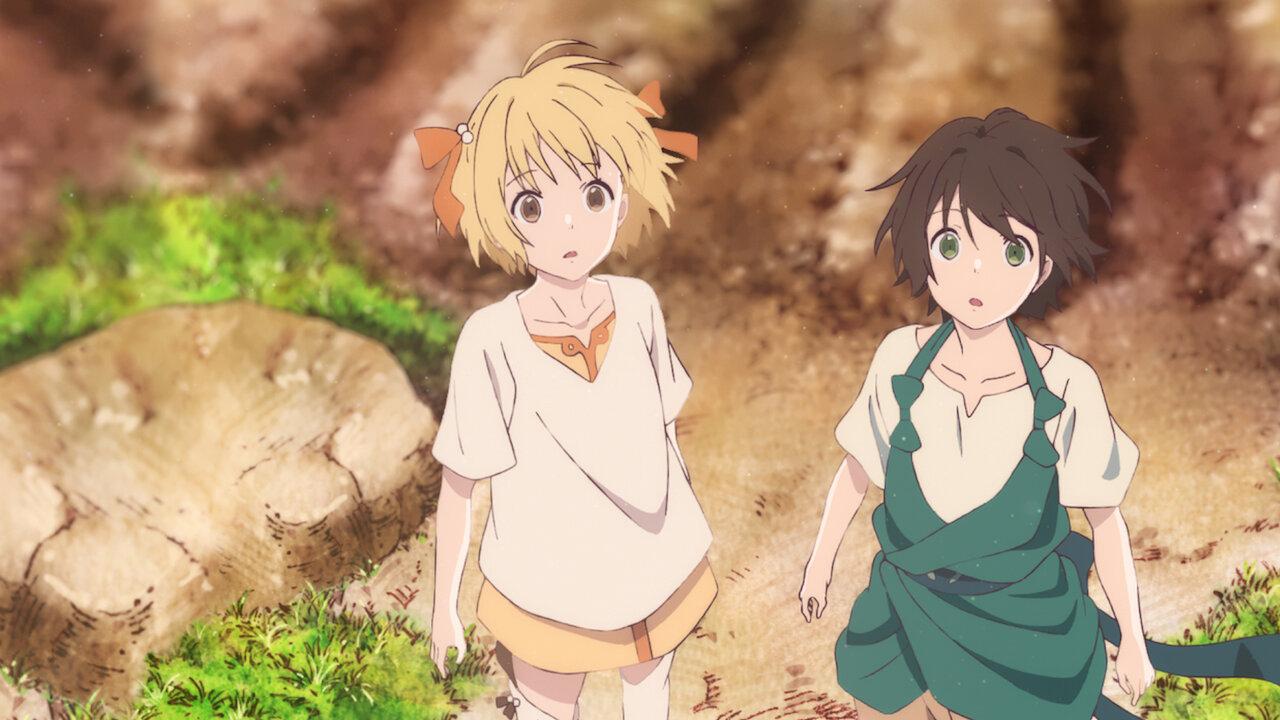
Children of the Whales invites audiences into the realm of the Marked, a close-knit community-dwelling on the floating island known as the Mud Whale. Blessed with extraordinary abilities yet burdened by fleeting lifespans, the Marked navigate a world veiled in enigma and hardship.
The dynamic between Chakuro and Lykos is depicted as more platonic than romantic, their connection rooted in mutual intrigue and shared discoveries. As they venture forth to uncover the truth behind the Mud Whale, their bond deepens, yet romance takes a backseat to the overarching themes of survival and exploration.
“Children of the Whales” (Kujira no Kora wa Sajou ni Utau) is a visually stunning anime series that immerses viewers in a richly crafted world filled with mystery, magic, and thought-provoking themes. Created by Abi Umeda, the manga was serialized from 2013 to 2019, and an anime adaptation produced by J.C. Staff aired in 2017.
Set in a vast ocean of sand known as the “Sea of Sand,” the story follows a group of inhabitants aboard a massive ship called the Mud Whale as they navigate a world shrouded in secrets and danger.
The central protagonist is Chakuro, a curious and empathetic young archivist who diligently records the history of his people aboard the Mud Whale. Unlike most of the inhabitants, Chakuro possesses the rare ability to use “thymia,” a form of psychokinetic power that allows him to manipulate his surroundings.
His life takes a dramatic turn when he encounters a mysterious girl named Lykos, who is revealed to be a soldier from an opposing faction known as the “Empire.”
As Chakuro and his friends reveal the mysteries of the Sea of Sand and the true nature of their world, they confront ethical dilemmas, political intrigue, and the harsh realities of survival. The series explores themes of identity, morality, and the consequences of war, as the characters grapple with their own beliefs and confront the legacy of their ancestors.
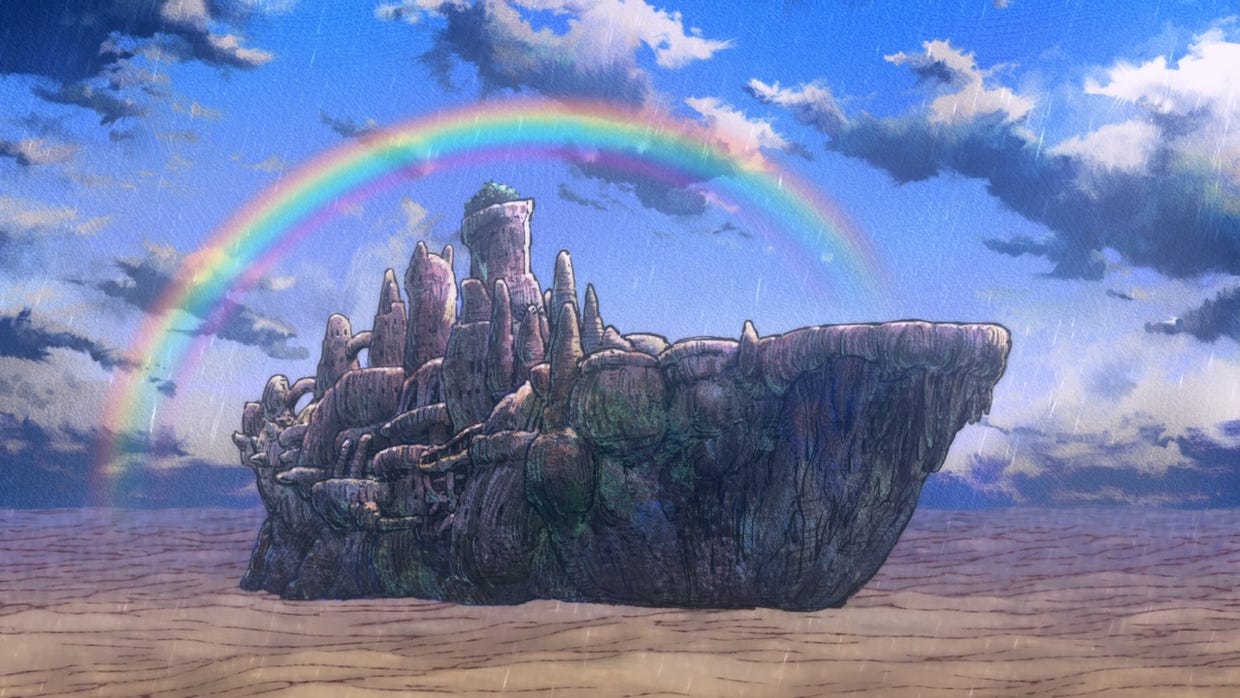
One of the most striking aspects of “Children of the Whales” is its breathtaking art direction and world-building. The Sea of Sand is rendered in exquisite detail, with sweeping vistas of dunes and ancient ruins that evoke a sense of wonder and awe. The character designs are equally impressive, with each inhabitant of the Mud Whale boasting unique costumes and features that reflect their distinct personalities and backgrounds.
The animation by J.C. Staff is fluid and dynamic, capturing the beauty and brutality of the world of “Children of the Whales” with skill and precision. From intense action sequences to quiet moments of introspection, the animation breathes life into the series’ fantastical elements and emotional beats. The use of color and lighting further enhances the atmosphere, creating a sense of immersion that draws viewers into the story.
The soundtrack, composed by Hiroaki Tsutsumi, is haunting and evocative, with ethereal melodies and stirring orchestral arrangements that complement the series’ tone and themes.
The opening and ending themes, performed by various artists, capture the spirit of adventure and melancholy that permeate throughout the series, setting the stage for the epic journey that awaits the characters.
“Children of the Whales” has garnered praise for its compelling storyline, memorable characters, and stunning visuals. Viewers have been excited by the series’ intricate world-building and thought-provoking themes, as well as its ability to blend elements of fantasy, science fiction, and drama into a cohesive and engaging narrative.
The anime adaptation, in particular, has been lauded for its faithful adaptation of the source material and its striking visual presentation.
Children of the Whales is a mesmerizing anime series that transports viewers to a world of wonder and intrigue. Whether you’re drawn to its fantastical setting, complex characters, or thought-provoking themes, this series offers a nice and immersive experience that is sure to leave a lasting impression.
Memes of the Day
Ane Naru Mono by Pochi
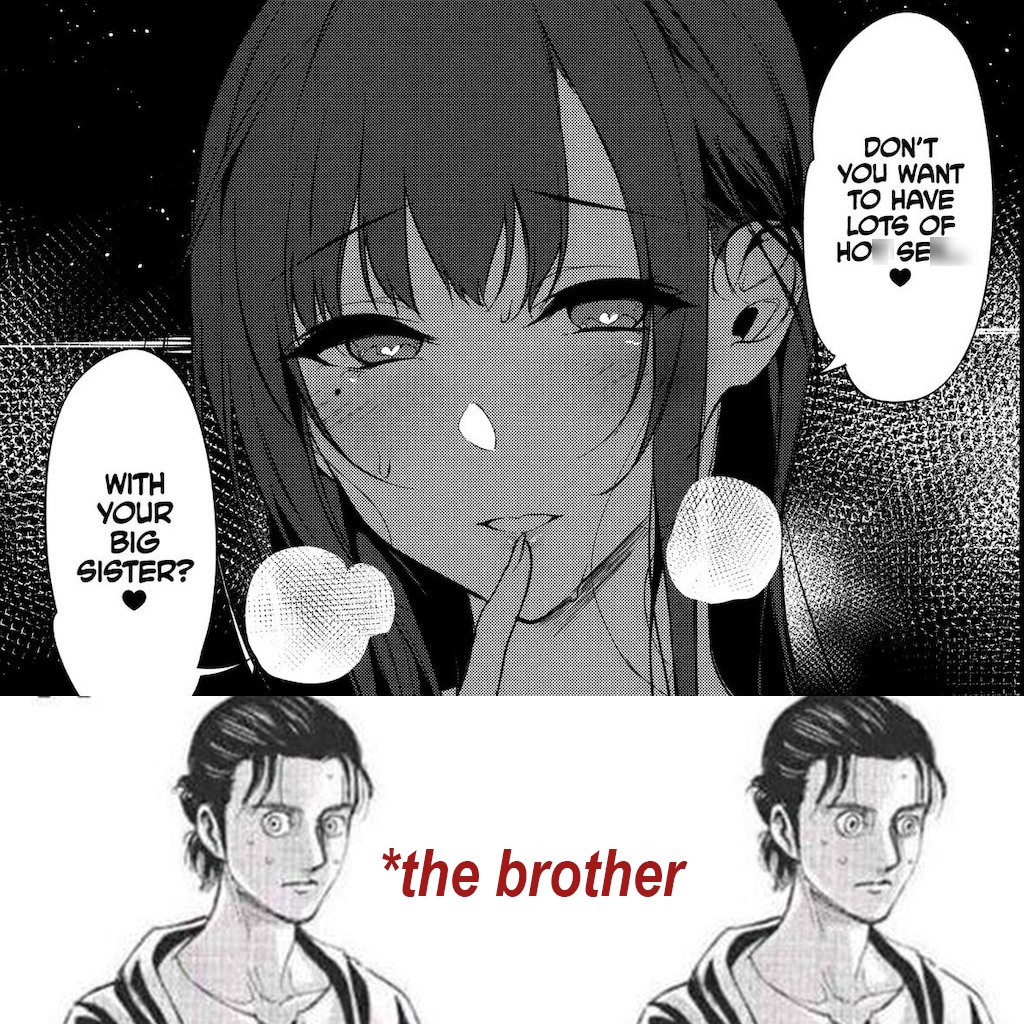
Rei inugai

Pixiv 115726851
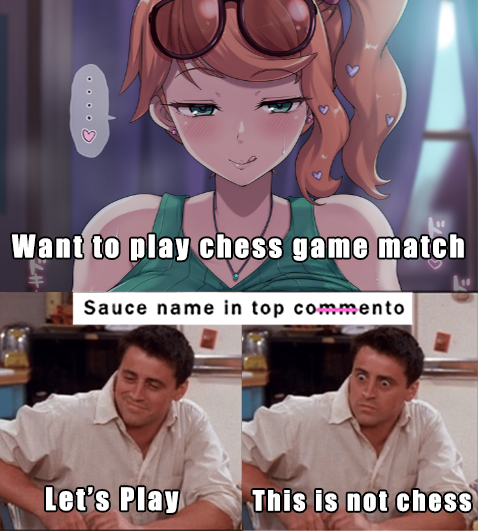
Tawawa on Monday
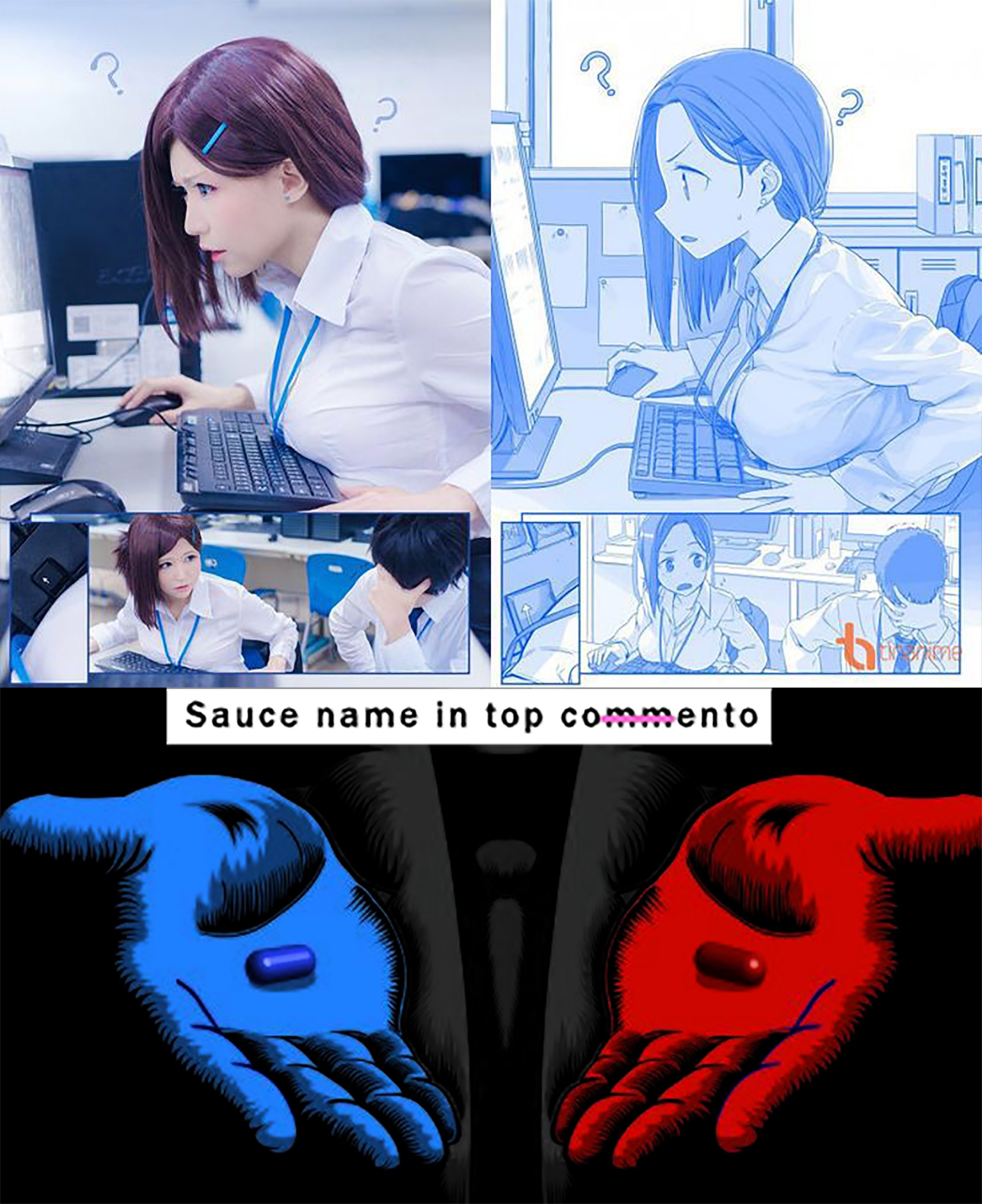
Secret Class

Morganite wa Nurehikaru | Gleaming Morganite

Ajisai No Chiru Koro Ni

So low

[Misaki (Higashino Mikan)] Oppai na Natsuyasumi
